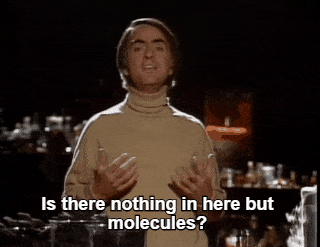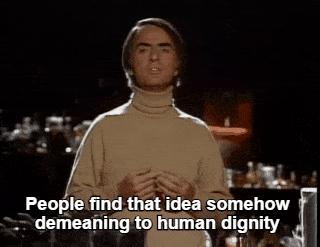Don’t Despair, Be There! facebook.com/events/379999075690608

Don’t despair, be there! facebook.com/events/379999075690608
More Posts from The-grey-areas-blog and Others
Alzheimer's Disease linked to the metabolism of unsaturated fats
A new study published in PLOS Medicine’s Special Issue on Dementia has found that the metabolism of omega-3 and omega-6 unsaturated fatty acids in the brain are associated with the progression of Alzheimer’s disease.

Alzheimer’s disease is a neurodegenerative disorder, which causes impaired memory, executive function and language. It accounts for 60 - 80% of total dementia cases worldwide, with over 46 million people suffering from the disease worldwide. The number of patients is estimated to rise to 131.5 million by 2050.
Currently it is thought that the main reason for developing memory problems in dementia is the presence of two big molecules in the brain called tau and amyloid proteins. These proteins have been extensively studied and have been shown to start accumulating in the brain up to 20 years prior to the onset of the disease. However, there is limited information on how small molecule metabolism in the brain is associated with the development and progression of Alzheimer’s disease.
In this study, researchers from King’s College London and the National Institute on Aging in the United States looked at brain tissue samples from 43 people ranging in age from 57 to 95 years old. They compared the differences in hundreds of small molecules in three groups: 14 people with healthy brains, 15 that had high levels of tau and amyloid but didn’t show memory problems and 14 clinically diagnosed Alzheimer’s patients.
They also looked at three different areas in the brain, one that usually shows little tau and amyloid, one that shows more tau and another that shows more amyloid. The main molecules that were different were six small fats, including omegas, which changed in abundance in different regions of the brain.
They found that unsaturated fatty acids were significantly decreased in Alzheimer’s brains when compared to brains from healthy patients.
Co-lead author of the study, Dr Cristina Legido Quigley from King’s College London said: “While this was a small study, our results show a potentially crucial and unexpected role for fats in the onset of dementia. Most surprisingly we found that a supposedly beneficial omega3, DHA, actually increased with the progression of the disease.
“It is now important for us to build on and replicate these findings in a larger study and see whether it corroborates our initial findings.”
Living and Working Aboard Station
Join us on Facebook Live for a conversation with astronaut Kate Rubins and the director of the National Institutes for Health on Tuesday, October 18 at 11:15 a.m. ET.
Astronaut Kate Rubins has conducted out of this world research aboard Earth’s only orbiting laboratory. During her time aboard the International Space Station, she became the first person to sequence DNA in space. On Tuesday, she’ll be live on Facebook with National Institute of Health director Francis Collins, who led the effort to map the human genome. You can submit questions for Kate using the hashtag #SpaceChat on Twitter, or during the live event. Here’s a primer on the science this PhD astronaut has been conducting to help inspire your questions:

Kate has a background in genomics (a branch of molecular genetics that deals with the study of genomes,specifically the identification and sequencing of their constituent genes and the application of this knowledge in medicine, pharmacy,agriculture, and other fields). When she began her tenure on the station, zero base pairs of DNA had been sequenced in space. Within just a few weeks, she and the Biomolecule Sequencer team had sequenced their one billionth base of DNA aboard the orbital platform.
“I [have a] genomics background, [so] I get really excited about that kind of stuff,” Rubins said in a downlink shortly after reaching the one billion base pairs sequenced goal.
Learn more about this achievement:
+First DNA Sequencing in Space a Game Changer
+Science in Short: One Billion Base Pairs Sequenced
Why is DNA Sequencing in Space a Big Deal?
A space-based DNA sequencer could identify microbes, diagnose diseases and understand crew member health, and potentially help detect DNA-based life elsewhere in the solar system.
+Why Sequencing DNA in Space is a Big Deal
https://youtu.be/1N0qm8HcFRI
Miss the Reddit AMA on the subject? Here’s a transcript:
+NASA AMA: We just sequenced DNA in space for the first time. Ask us anything!
NASA and Its Partnerships

We’re not doing this alone. Just like the DNA sequencing was a collaborative project with industry, so is the Eli Lilly Hard to Wet Surfaces investigation, which is a partnership between CASIS and Eli Lilly Co. In this experiment aboard the station, astronauts will study how certain materials used in the pharmaceutical industry dissolve in water while in microgravity. Results from this investigation could help improve the design of tablets that dissolve in the body to deliver drugs, thereby improving drug design for medicines used in space and on Earth. Learn more about what we and our partners are doing:
+Eli Lilly Hard to Wet Surfaces – been happening the last week and a half or so
Researchers to Test How Solids Dissolve in Space to Design Better Tablets and Pills on Earth
With our colleagues at the Stanford University School of Medicine, we’re also investigating the effects of spaceflight on stem cell-derived heart cells, specifically how heart muscle tissue, contracts, grows and changes in microgravity and how those changes vary between subjects. Understanding how heart muscle cells change in space improves efforts for studying disease, screening drugs and conducting cell replacement therapy for future space missions. Learn more:
+Heart Cells
+Weekly Recap From the Expedition Lead Scientist for Aug. 18, 2016
It’s Not Just Medicine

Kate and her crew mates have also worked on the combustion experiments.
Kate has also worked on the Bigelow Expandable Activity Module (BEAM), an experimental expandable capsule that docks with the station. As we work on our Journey to Mars, future space habitats are a necessity. BEAM, designed for Mars or other destinations, is a lightweight and relatively simple to construct solution. Kate has recently examined BEAM, currently attached to the station, to take measurements and install sensors.

Kate recently performed a harvest of the Plant RNA Regulation experiment, by removing seed cassettes and stowing them in cold stowage.

The Plant RNA Regulation investigation studies the first steps of gene expression involved in development of roots and shoots. Scientists expect to find new molecules that play a role in how plants adapt and respond to the microgravity environment of space, which provides new insight into growing plants for food and oxygen supplies on long-duration missions. Read more about the experiment:
+Plant RNA Harvest
NASA Astronaut Kate Rubins is participating in several investigations examining changes in her body as a result of living in space. Some of these changes are similar to issues experienced by our elderly on Earth; for example, bone loss (osteoporosis), cardiovascular deconditioning, immune dysfunction, and muscle atrophy. Understanding these changes and how to prevent them in astronauts off the Earth may help improve health for all of us on the Earth. In additional, the crew aboard station is also working on more generalized studies of aging.
+ Study of the effects of aging on C. elegans, a model organism for a range of biological studies.

The only good thing I can see coming out of Brexit (if they actually deliver beyond a speech)
It could also be the development of dermatillomania, a condition said to be characterised as a form of OCD. See these sites:
OCDLA
Skinpick
NHS
PSYCHOLOGY FACT #396
Biting the skin around your nails or pulling the top layer of skin off your lips are signs of developing anxiety disorders.
Read more psychology facts Here

Image of the Week - December 26, 2016
CIL:38938 - http://www.cellimagelibrary.org/images/38938
Description: Scanning electron micrograph of the inside of a cancer cell. This cell originates from a squamous cell carcinoma, a type of skin cancer. The cell has been frozen and split open to reveal its nucleus.
Author: Anne Weston
Licensing: Attribution-NonCommercial-NoDerivs 2.0 UK: England & Wales (CC BY-NC-ND 2.0 UK)


http://www.sciencemadesimple.co.uk/news-blogs/wendy-awarded-an-mbe
Science getting recognised, and I’m so happy. The second link is Wendy Sadler who is being awarded an MBE. She’s the founding director of science made simple, a Welsh program to help get kids involved and excited by science after they realised our education system tended to have the opposite effect. According to her colleagues, she’s not only an amazing scientist but incredibly dedicated to inspiring a new generation to follow their curiosities.



The essence of life is not the atoms and small molecules that go into us, it’s the way, the ordering, that those molecules are put together.
- Carl Sagan
Anatomical Illustrations from Edo-Period, Japan.


Japan’s second human dissection, 1758 // First human female dissection, 1759
In 1758, a student of Tōyō Yamawaki’s named Kōan Kuriyama performed Japan’s second human dissection (see illustration on left). The following year, Kuriyama produced a written record of Japan’s first dissection of a human female (see illustration on right). In addition to providing Japan with its first real peek at the female anatomy, this dissection was the first in which the carving was performed by a doctor. In previous dissections, the cutting work was done by hired assistants due to taboos associated with handling human remains.
I struggle to understand why other white people refuse to realise they're racist. You can be at every rally, supporting every cause, it doesn't matter. We were raised to be inherently racist, and the sooner you face up to that the sooner you can actually work on solving the problems. Prejudice is automatic in most of our upbringings, and if you're living your life saying 'oh but I'm not racist', you're never actually gonna get rid of those prejudices.
-
 socialcyanide reblogged this · 8 years ago
socialcyanide reblogged this · 8 years ago -
 theinfinitemonkeytheorem-blog reblogged this · 8 years ago
theinfinitemonkeytheorem-blog reblogged this · 8 years ago -
 ogrababanico liked this · 8 years ago
ogrababanico liked this · 8 years ago -
 peacockfire reblogged this · 8 years ago
peacockfire reblogged this · 8 years ago -
 wehadfacesthen liked this · 8 years ago
wehadfacesthen liked this · 8 years ago -
 trippinonstars liked this · 8 years ago
trippinonstars liked this · 8 years ago -
 kateosaurus-rex reblogged this · 8 years ago
kateosaurus-rex reblogged this · 8 years ago -
 revangerang reblogged this · 8 years ago
revangerang reblogged this · 8 years ago -
 revangerang liked this · 8 years ago
revangerang liked this · 8 years ago -
 myquanahstuff reblogged this · 8 years ago
myquanahstuff reblogged this · 8 years ago -
 myquanahstuff liked this · 8 years ago
myquanahstuff liked this · 8 years ago -
 fake-your-de-ath reblogged this · 8 years ago
fake-your-de-ath reblogged this · 8 years ago -
 glo-fq liked this · 8 years ago
glo-fq liked this · 8 years ago -
 mycardboardcrown reblogged this · 8 years ago
mycardboardcrown reblogged this · 8 years ago -
 usilabem reblogged this · 8 years ago
usilabem reblogged this · 8 years ago -
 roughknuckles-victoria reblogged this · 8 years ago
roughknuckles-victoria reblogged this · 8 years ago -
 nihonling reblogged this · 8 years ago
nihonling reblogged this · 8 years ago -
 patience4not reblogged this · 8 years ago
patience4not reblogged this · 8 years ago -
 patience4not liked this · 8 years ago
patience4not liked this · 8 years ago -
 chemman99 reblogged this · 8 years ago
chemman99 reblogged this · 8 years ago -
 sfmouse liked this · 8 years ago
sfmouse liked this · 8 years ago -
 independent1001-blog reblogged this · 8 years ago
independent1001-blog reblogged this · 8 years ago -
 independent1001-blog liked this · 8 years ago
independent1001-blog liked this · 8 years ago -
 oak1985 reblogged this · 8 years ago
oak1985 reblogged this · 8 years ago -
 chaotic-dyke reblogged this · 8 years ago
chaotic-dyke reblogged this · 8 years ago -
 russalex reblogged this · 8 years ago
russalex reblogged this · 8 years ago -
 russalex reblogged this · 8 years ago
russalex reblogged this · 8 years ago -
 lestr4wberry liked this · 8 years ago
lestr4wberry liked this · 8 years ago -
 shedreamsofwolves liked this · 8 years ago
shedreamsofwolves liked this · 8 years ago -
 thefirstlotus reblogged this · 8 years ago
thefirstlotus reblogged this · 8 years ago -
 leviathanmirror reblogged this · 8 years ago
leviathanmirror reblogged this · 8 years ago -
 tartyone reblogged this · 8 years ago
tartyone reblogged this · 8 years ago -
 imenak reblogged this · 8 years ago
imenak reblogged this · 8 years ago -
 consigliere-vincenzo liked this · 8 years ago
consigliere-vincenzo liked this · 8 years ago -
 thewritehag reblogged this · 8 years ago
thewritehag reblogged this · 8 years ago -
 stargaysed reblogged this · 8 years ago
stargaysed reblogged this · 8 years ago
'We're a grey area in a world that doesn't like grey areas'
48 posts